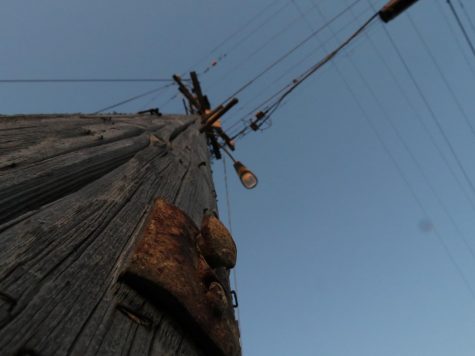Is PG&E Responsible for the Santa Rosa Fires?
November 6, 2017
The privately owned, state regulated energy giant PG&E may have had more of a hand in the recent devastation caused by the Sonoma County fires than they care to admit. As previously mentioned by The Script, those record setting blazes were caused largely by an unfortunate combination of extreme weather phenomenon — but PG&E’s shoddy maintenance practices also likely contributed to the flames’ rapid progression.
PG&E has tried to deflect most of the blame onto nature, drawing attention to the hurricane force winds and dry conditions in the area during the disaster. But as reported by the Mercury News, people like Burlingame attorney Frank Pitre, who is suing on behalf of the victims, aren’t allowing the company to shirk responsibility — “It was more than just a lack of maintenance [on PG&E’s part]. It was a complete disregard for their requirements of vegetation management in rural areas.”
A Public Utilities Commission audit from 2010 to 2015, also brought to light by the Mercury News, recorded 3,527 instances of “[PG&E] work orders completed past their scheduled date.” One report from the audit detailed that there was “foliage found to be less than 18 inches away from a primary electrical line for a power pole in the Sonoma Division,” corroborating Pitre’s accusation of PG&E’s negligence.
And the potential threat to public safety fostered by the company isn’t limited to noncompliance with vegetation maintenance requirements — PG&E also has a considerable record of transformer explosions. KTVU reviewed the first responder radio broadcasts during the start of the fire, and noted that “crews on the ground called in downed wires and a blown transformer… 15 minutes later, crews can be heard reporting a fire in the same area.”

Transformers are, thankfully, not meant to explode — even in the face of elevated electrical input or output. An explosion caused by an excess of energy can occur in the event of an extreme surge, most commonly a lightning strike, but there are breakers in the power grid to deal with small spikes. The usual cause of transformer explosion then, is lack of maintenance; as corroded or exposed wiring inside a given unit can heat the sealed vessel until it bursts. The failure of multiple transformers during the Sonoma county fire, though not likely significant fuel for the blaze, further supports accusation of PG&E’s subpar equipment maintenance.
This isn’t PG&E’s first high profile failure either — far from it. Just weeks after the Northern California fires began burning, a landslide in San Francisco damaged six homes and has been attributed to a faulty pipe relocation. A 2015 wildfire in the Sierras was caused by neglected PG&E power lines. A 2010 pipeline explosion in San Bruno, California killed eight people and destroyed thirty-eight homes. A 2016 warehouse fire in Oakland killed thirty-six people during an illegal party (though PG&E is not directly at fault for this event they are being sued for oversight; for failing to notice and report on the repeated and anomalous electricity surges at the warehouse, caused by the illegal events regularly held there.) The list goes on.
The history of irresponsibility suggests PG&E is not without fault for the disaster. Is that to say that PG&E should be held accountable for all the damage caused by the fires? Of course not, but they are likely not blameless — and they certainly could have done more to minimize the contribution to the blazes made by their neglected equipment.
Despite being state-regulated, PG&E is a privately owned corporation whose primary motivator is, and always will be, financial gain. That does not discredit the work PG&E does, providing power to millions across California — though the company recently hiked their rates. PG&E claims this is to “ensure clean and reliable operation,” but their history — as delineated by the examples of negligence above — seems to indicate that the company is more interested in profitability than in providing citizens with a “clean and reliable operation.”
Alternative energy providers exist, but PG&E has the rights to the electrical infrastructure and is the company in charge of repairs. For the time being, Bay Area residents are stuck with PG&E working the grid.
Those in the Bay Area concerned about the future responsibility of PG&E will be reassured to learn that PG&E stock plummeted from $69 to $53.43 from October 11th to the 15th. This is the lowest stock prices have been since February 2016, and indicates frustration and disapproval from investors. The investigation into what caused the wildfire is still ongoing, but if PG&E is truly to blame, they have much to answer for.

